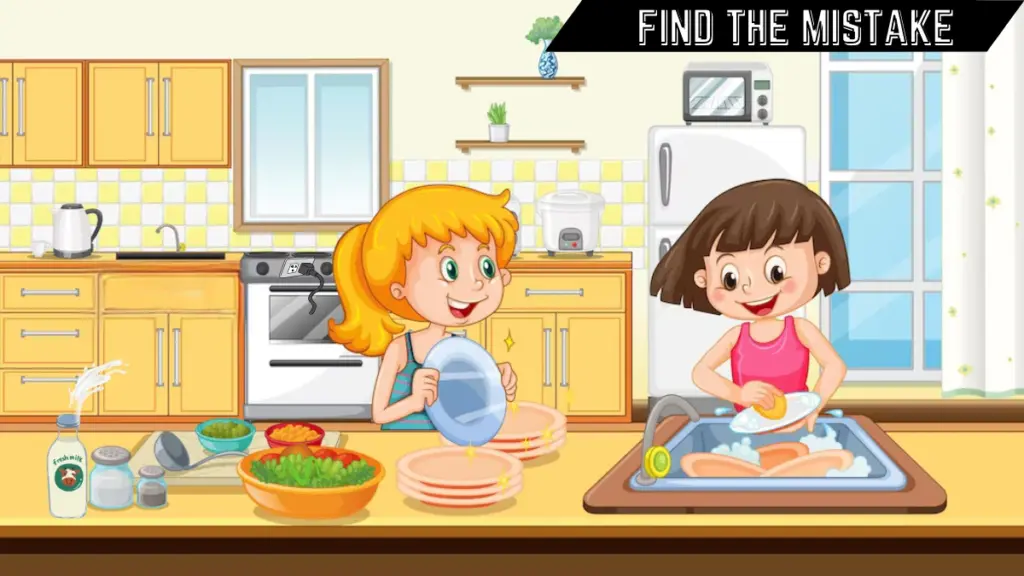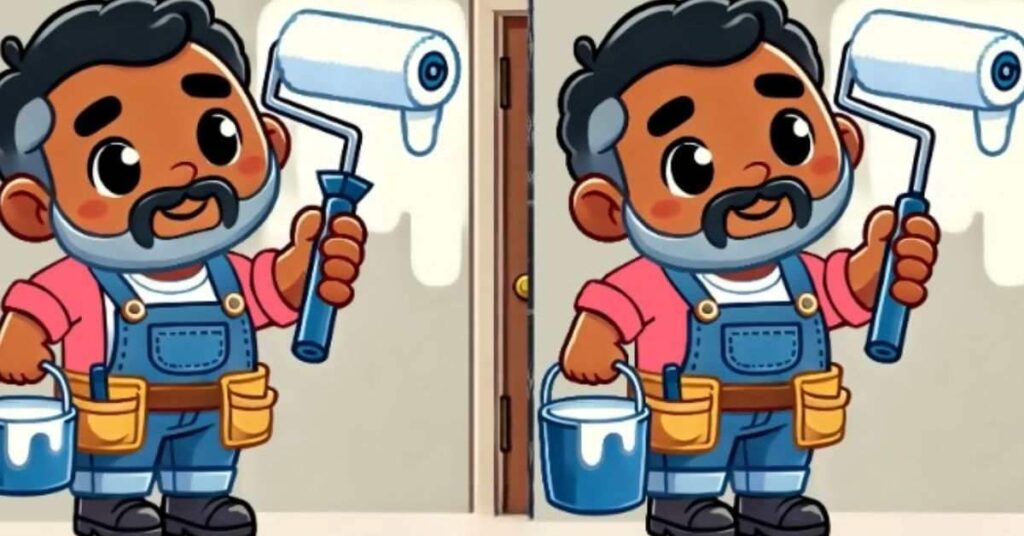Brain teasing
A brain teaser is a type of puzzle or problem designed to challenge a person’s thinking, reasoning, and problem-solving abilities. These introductions come in different forms, such as puzzles, logic puzzles, or visual puzzles. They often require creative thinking, multi-dimensional thinking and sometimes a little creative reasoning to solve.
Brain puzzles can be entertaining and educational and are often used to stimulate cognitive skills such as attention to detail, memory and critical thinking. They are popular in educational settings as well as in recreational activities to exercise the mind and entertain with puzzles ranging from simple to very complex.
Find 4 mistakes Visual visual challenge: Only a genius can find 4 mistakes in this Kitchen Image within 14 seconds
This type of brain teaser often presents an image of a kitchen with small errors intentionally placed in the scene. The challenge is to identify these mistakes quickly and accurately.
Participants were asked to closely examine the images within a certain time limit, usually 14 seconds in this case, to demonstrate their observation skills. Common errors can include misplaced items, inconsistent objects, inaccurate reflections, or other visual abnormalities.
The trailer implies that only individuals with exceptional attention to detail and rapid cognitive processing will be able to identify all four errors within the given time frame.
Article continues below ad
TREND
Find the 4 mistakes Visual Vision Challenge: Only a genius can find the 4 mistakes in this Kitchen Image within 14 seconds – Solution
In the kitchen image puzzle, there are four notable mistakes strategically placed to challenge the observer. First, the kitchen cabinets lack handles, making it odd. Second, the electrical switch box is awkwardly located on the stove, causing serious safety concerns.
Third, the milk appears to be poured into a bottle that is clearly sealed, creating visual inconsistency. Finally, a snake is camouflaged among the fruits in the basket, a startling and unsafe presence in the kitchen scene. These errors are designed to test the viewer’s ability to quickly identify inconsistencies and anomalies in a detailed scene.
The puzzle suggests that only those with keen observation skills and a knack for detailed thinking can successfully spot all four errors within the given 14-second time limit, highlighting the challenge of puzzles and attracts people who like visual puzzles and tricky puzzles.




